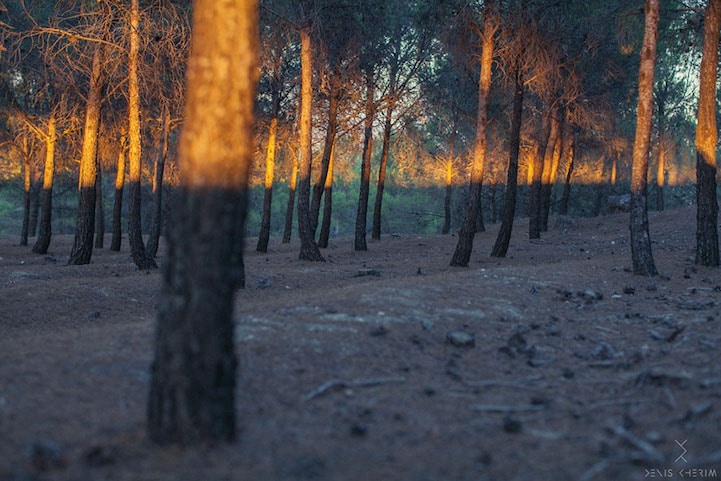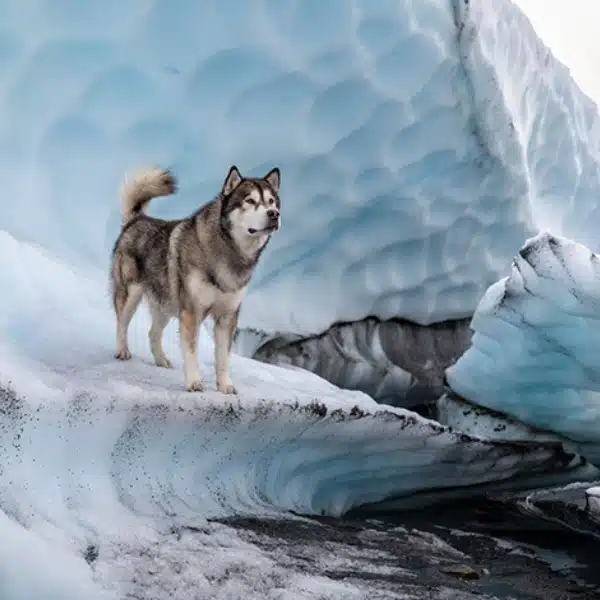
Over the past six years, artist Denis Cherim has been creatively using his photography to explore the small coincidences that surround us. Perfectly aligned trees, rays of light that cast interesting shadows, moments of duality created by architecture—these are just some of the many occurrences discovered during the Coincidence Project. This hunt for serendipitous moments has been a long one, but the photographer shows no signs of slowing down.
Keeping a watchful eye on the world around him, Cherim allows his surroundings to unveil the symmetries that make it special. Focusing in on average, everyday landscapes devoid of humans, he transforms the ordinary into a work of art.
In his new self-published book, Coincidence Project, Cherim gathers 56 of his favorite images into one publication. The limited edition book, which is available for purchase via his online shop, is an ode to the small joys in life. Cherim's work is a reminder that joy is all around us, we just need to take the time to stop and see it.
We had the chance to chat with the photographer about his work, how the project got started, and his most memorable “coincidence.” Read on for our exclusive interview.

How did your passion for photography come about?
Pieces here and there, gutted cameras all around—I could definitely say that I was born and raised surrounded by cameras. My father has worked fixing cameras for more than 30 years. Thanks to him, I learned the camera obscura process at a very young age, but my curiosity did not stop at what a camera looks like inside or how it works. I wanted to explore what I could do with it in the outside world.
I started to professionally pursue photography in high school. A photographer gave me the advice that you need to try everything in order to find your place. I followed his words and worked on very different projects, but where I feel the freest is when I am alone with my camera wandering around. As I never have been good at writing or drawing, I realized that photography was the perfect tool for me to tell a story about my thoughts, my doubts, my emotions, and how I look at the exciting world we live in.
Over the years, the passion for photography has grown and grown, a little bit at a time. But I think there will be a point when it will somehow evolve. I've always dreamed about becoming a photography film director, so maybe one day…

What first sparked the Coincidence Project?
I was already taking photographs for many years before the Coincidence Project came about in 2012. It all started when I was offered to try ayahuasca as a supervised way of experiencing altered states of consciousness. That was the first time in my life I was able to experience what it would be like to live in a non-duality world—there was nothing that appeared to be big or small, nothing far or close, nothing beautiful or ugly, any units of measurement just disappeared. Since that moment, my way of perceiving the world changed, and I never looked at it with the same eyes.
Due to social conditioning, we tend to value everything. We polarize each fact trying to understand its meaning. We live in a constant struggle to define the Whole through other smaller meanings, instead of contemplating its majesty. In the Coincidence Project, I just want to create new spaces, enclosed in our daily surroundings, free of duality, where everyone can escape and recreate.

How has working on the project changed the way you view the world?
Through the Coincidence Project, I have been able to experience the world in its totality. That is why the images do not show flashy or glorious scenes, but special places where the opposites meet to unite their differences. It has become the perfect way for me to escape and renounce the condemnation of everyday reality.
When looking for “coincidences” I feel more connected to the ground and less to society and this is probably why people rarely appear in my pictures. In my opinion, we need some time to disconnect from everything and reconnect with ourselves. This is what the project has done for me and I am glad so many people comment on my photographs that they don't know why, but the pictures bring them calmness.

How do you continue to keep things fresh after all these years working on the project?
I have my good and my bad moments, but I usually try to not get obsessed when I find myself in the bad ones. I have learned over the years that I cannot force myself to see more or less “coincidences,” they are already there and it depends on my mood and state of mind to find them.
I don't think about myself as a content creator, which is the popular profession to be right now. This is why I am not necessarily looking for fresh material. I just want to share my vision with people.
I must say that when you share your projects on social media and people start to follow you, after some time you will find yourself with quite a lot of expectations to fulfill. But I have made peace with the fact that I only can offer to my followers what I am and I what I see in every moment of my path. And I am really grateful to the people who have been with me in the glorious moments, but also in the not so shiny ones.

Do you have a particular “coincidence” that really stands out to you as surprising?
Every one of them has shown me and taught me something different. But if I need to choose right now, without underestimating the rest, the first that comes to my mind is [the above photo].
Every time I look at it, I experience again and again all that loneliness filled at the same time with so much kindness. For me, it was a moment of pure perfection.

You recently put together a book. What was the process for selecting the images to be included?
I had the chance to travel and live in different countries. The Coincidence Project Book gathers together a selection of photographs from different places that I took in different moments of my life.
When I first started planning the book, I thought it might be interesting to tell where every picture was taken, but the more I thought about it, the surer I was about not doing it. In this way, I wanted to waive the cultural factor and center my attention on the composition. I wanted to create a thread—a connection between the pictures as you turn the pages. I wanted to make the spectators look closely at the importance of all our surroundings, because as banal they may seem, there is always something else there.

What's the most satisfying aspect of seeing the final product? And how is it different for you, as a creator, to see your work printed rather than digitally on a screen?
After so many years of taking photographs—and having thousands of pictures—the most satisfying part of creating this book was the selecting. As it is a self-edited book, I felt really excited about picking out my personal favorite photos. I always wanted to see my work printed, and as the impatient person I am, self-publishing felt like the right choice for this first occasion.
I still have many more photos I would love to see printed, even put together in a second book if the opportunity presents in the form of an editor, a publisher, or any other collaborators.

Where do you go from here for the Coincidence Project? Does it have an end or do you think it will keep going?
As I previously mentioned, the Coincidence Project came across suddenly, and I have been developing it for more than six years already. My hope is that it is here to stay.
There are people who use meditation as a way of putting together their thoughts and emotions. For me, going out to find and capture “coincidences” has become my own and particular way of meditating.

What do you hope the public takes away from the work?
I hope they can start asking themselves questions. I want to show them that they can observe and appreciate the world that surrounds us without breaking it in parts and without choosing one or another extreme of it. I want to demonstrate to them that as banal as daily objects and situations may seem, there always can be something exciting yet to explore. I want to make them enjoy the simplest things as much as they would enjoy traveling to a new place.

Any upcoming projects you'd like to share?
I have been working for some time in a parallel project called 1+1=1. I came up with the idea of creating perfect doubles, quasi-surrealist landscapes, in order to make the viewers ask themselves if the resulting photographs belong to the real world or the world of dreams. The 1+1=1 Project presents itself as a kind of derivation of the Coincidence Project. You can find more information about it here.





Denis Cherim: Website | Facebook | Instagram
My Modern Met granted permission to use photos by Denis Cherim.
Related Articles:
“Coincidence Project” Reveals Perfectly Timed and Serendipitously Aligned Photos of the World
Street Photographer Hunts Down Life’s Uncanny Coincidences
Perfectly Timed Splashes of Liquid Look Like Potted Flowers
Photographer Captures Perfectly Framed Photos of Subtle Coincidences
Photographer Spends 9 Years on One Street Corner Capturing Same Commuters Every Day






















































































